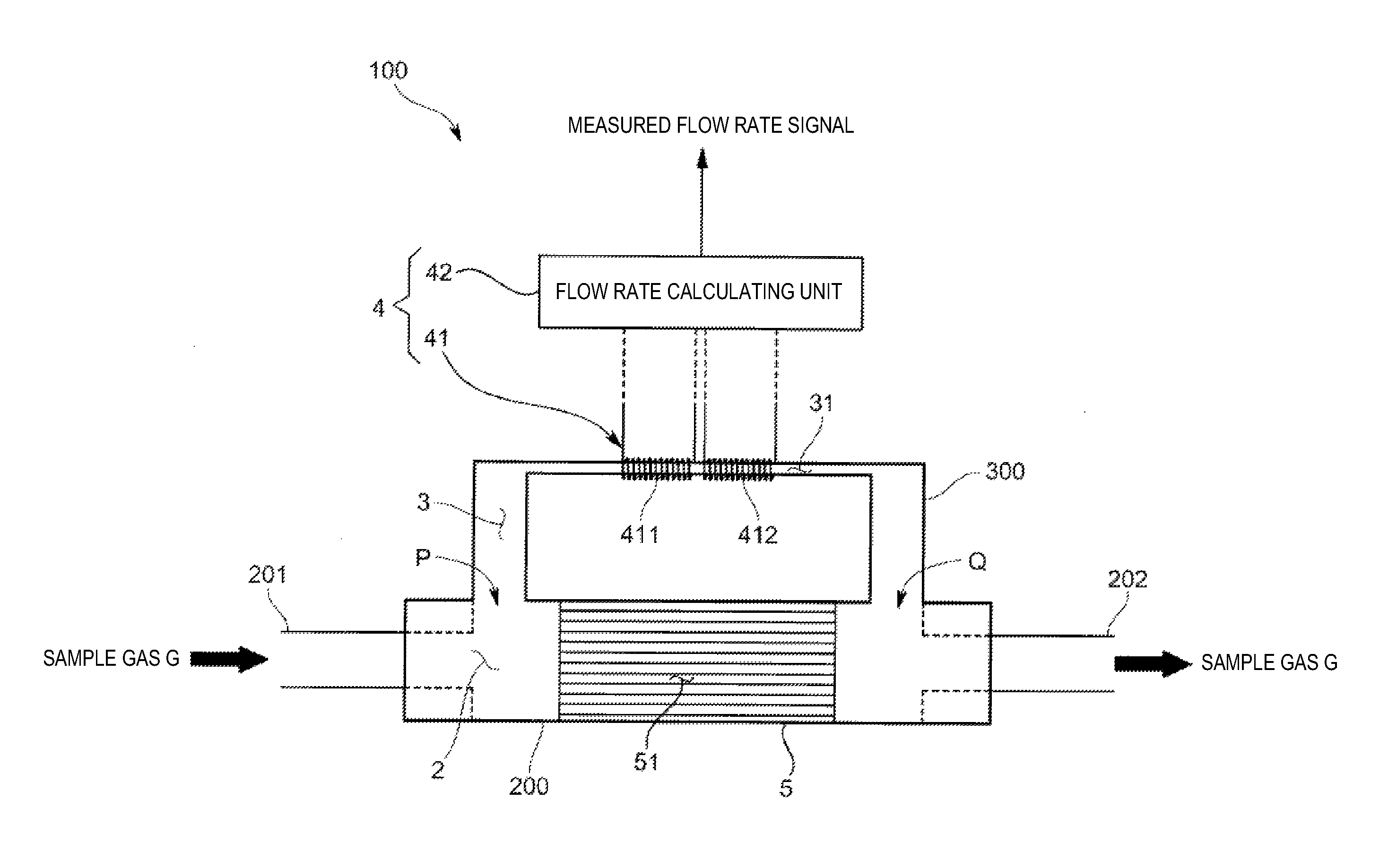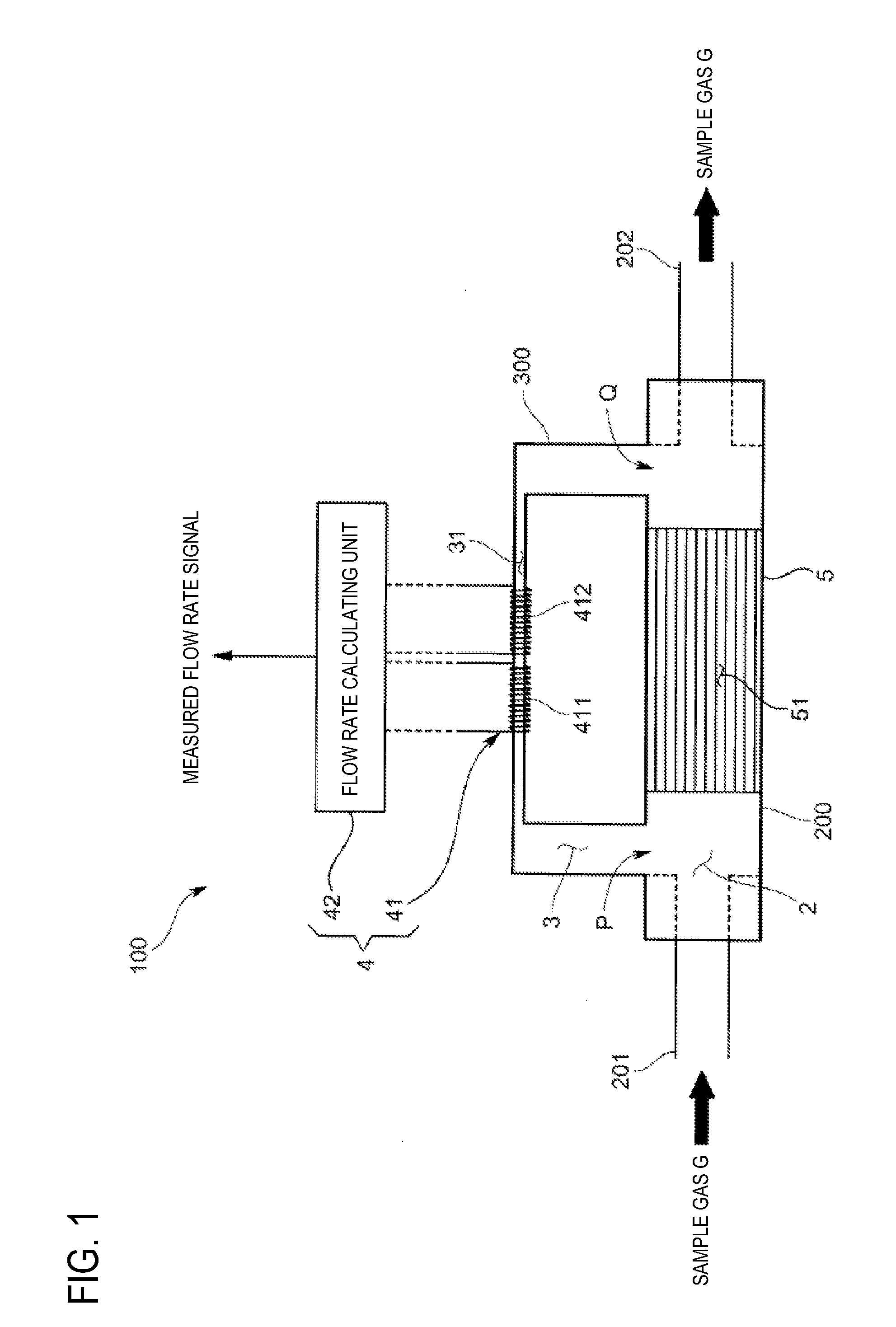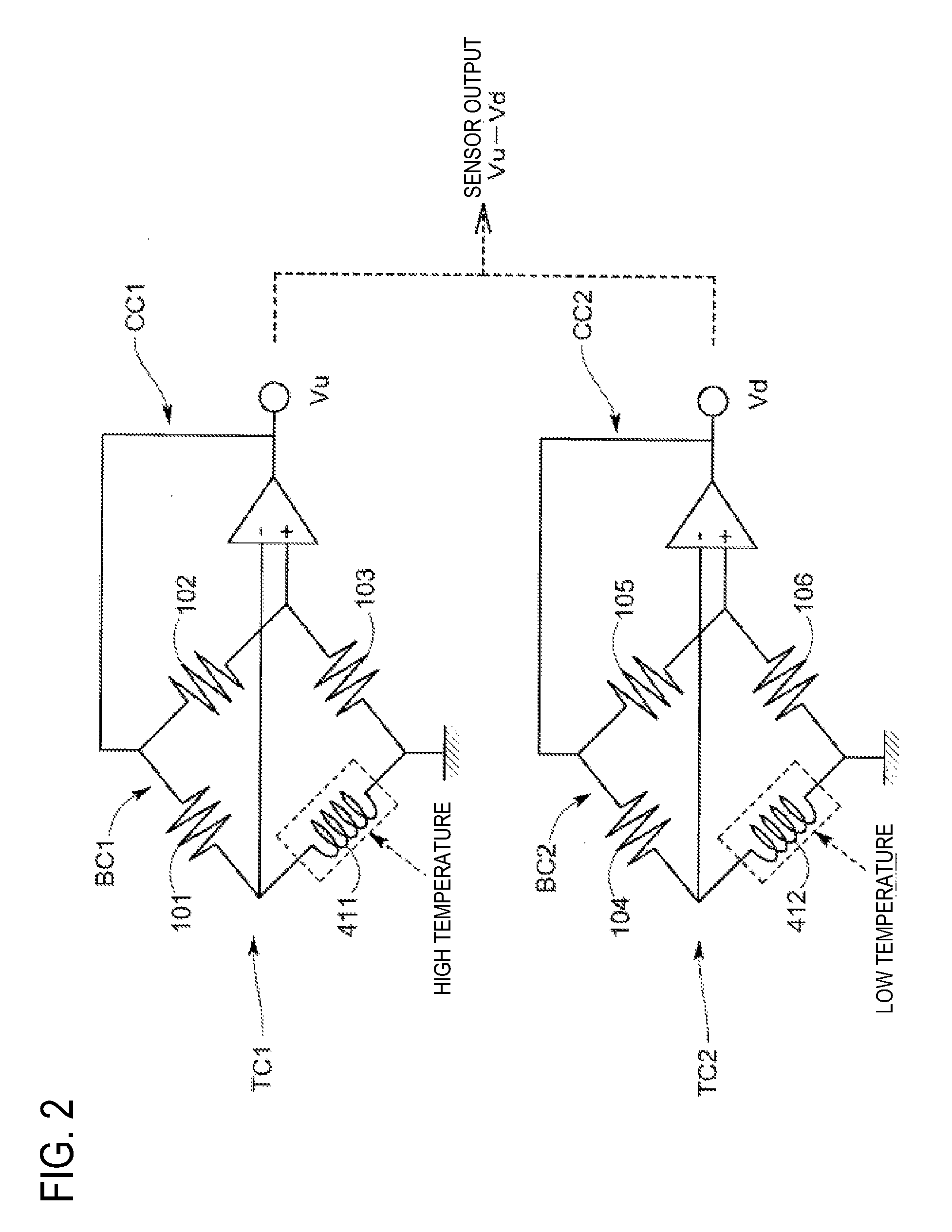Thermal flow rate sensor
a flow rate sensor and flow rate technology, applied in the direction of liquid/fluent solid measurement, process and machine control, instruments, etc., can solve the problems of linearity deterioration, low heat transfer efficiency, linearity degradation, etc., to improve the linearity enhance the level of process precision, and improve the effect of flow rate output characteristics
- Summary
- Abstract
- Description
- Claims
- Application Information
AI Technical Summary
Benefits of technology
Problems solved by technology
Method used
Image
Examples
Embodiment Construction
[0027]Exemplary embodiments of a thermal flow rate sensor according to the present invention will be explained with reference to the drawings.
[0028]A thermal flow rate sensor 100 according to an embodiment is a thermal mass flow rate sensor that is used in, for example, a semiconductor production process and includes, as shown in FIG. 1: a main flow path 2 through which a sample gas G (a fluid) (e.g., a semiconductor process gas such as SF6) flows; a sensor flow path 3 that branches off from the main flow path 2 so as to cause the sample gas G to flow in a split flow and to detect a flow rate of the sample gas G; a flow rate detecting mechanism 4 that is configured to detect the flow rate of the sample gas G; and a laminar flow element 5 serving as a resistive element that is provided in the main flow path 2 so as to be positioned between a split point P and a junction point Q of the sensor flow path 3 and that includes a plurality of internal flow paths 51. The laminar flow element...
PUM
 Login to View More
Login to View More Abstract
Description
Claims
Application Information
 Login to View More
Login to View More - R&D
- Intellectual Property
- Life Sciences
- Materials
- Tech Scout
- Unparalleled Data Quality
- Higher Quality Content
- 60% Fewer Hallucinations
Browse by: Latest US Patents, China's latest patents, Technical Efficacy Thesaurus, Application Domain, Technology Topic, Popular Technical Reports.
© 2025 PatSnap. All rights reserved.Legal|Privacy policy|Modern Slavery Act Transparency Statement|Sitemap|About US| Contact US: help@patsnap.com



